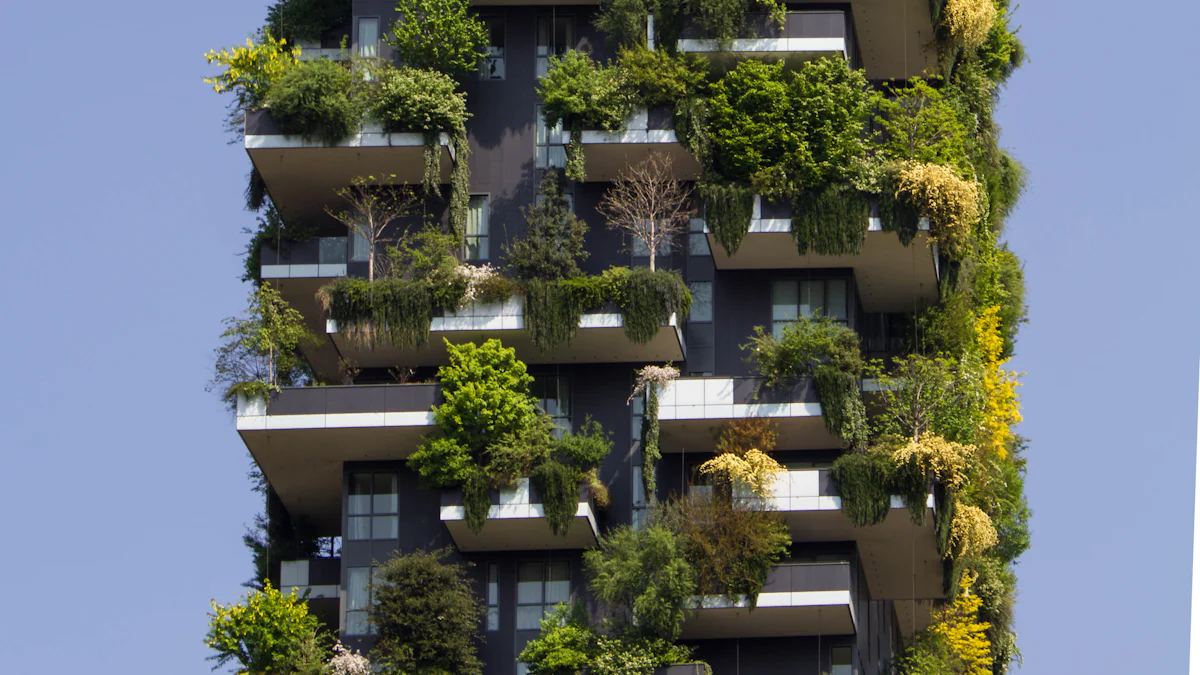The Heartfelt Impact of Design on Society and the Environment

The Power of Design for Positive Change
Design has the remarkable ability to impact society and the environment positively. By centering on innovative solutions, design can truly transform lives. Take, for instance, the case study of redesigning public spaces. Such initiatives not only enhance aesthetics but also foster a sense of community belonging and pride, directly impacting people's well-being. Moreover, by incorporating user-centered design principles and ensuring accessibility for diverse audiences, design can create inclusive experiences that resonate with individuals from all walks of life.
When it comes to measuring the success of these endeavors, tracking social impact indicators becomes crucial. These metrics provide valuable insights into how design interventions are influencing communities and driving change. By evaluating the effectiveness of design strategies and implementing long-term sustainability plans, we ensure that our efforts leave a lasting legacy of positive transformation.
Empowering Communities through Creative Solutions
In the realm of design, empowering communities through creative solutions is not just about aesthetics; it's about fostering a sense of belonging and driving positive change. Collaborative design initiatives play a pivotal role in this process by engaging stakeholders in every step of the design journey. When Bass Circle Community came together to revitalize their neighborhood park, they didn't just envision a space but a hub for connection and growth. By involving residents, local businesses, and city officials in the conversion design process, they ensured that the final outcome truly reflected the community's values and aspirations.
Co-creation workshops serve as catalysts for innovation, where diverse voices converge to shape impactful projects. The success story of Carver Terrace Community stands as a testament to the power of collective creativity. Through these workshops, residents explored new possibilities for their shared spaces, leading to transformative designs that now serve as beacons of inspiration within the neighborhood.
Building sustainable partnerships is key to sustaining the momentum of community-led projects. The East Capitol Urban Farm project exemplifies how collaboration between designers, environmentalists, and policymakers can result in lasting environmental and social benefits. By aligning goals and resources effectively, these partnerships create a ripple effect that extends far beyond individual projects.
Design thinking for social innovation goes beyond aesthetics; it's about understanding people's needs at a deeper level. By conducting user research and employing empathy mapping techniques, designers can uncover insights that drive meaningful change within communities. Designing with compassion isn't just a choice; it's a responsibility to uplift voices and create spaces that resonate with all individuals.
Innovative Design Approaches for Environmental Sustainability
In the realm of design, innovative approaches are paving the way for environmental sustainability. By embracing sustainable materials and practices, designers can create a positive impact on both society and the environment. Eco-friendly design solutions are at the forefront of this movement, promoting the use of renewable resources and minimizing environmental harm. Circular design principles further enhance this concept by emphasizing the importance of reducing waste and maximizing resource efficiency. Through practices like upcycling and repurposing, designers breathe new life into existing materials, contributing to a more sustainable future.
Biophilic design offers a unique perspective by connecting people with nature through thoughtful design elements. Integrating nature into urban spaces not only enhances aesthetics but also promotes well-being among city dwellers. The benefits of biophilic design extend beyond visual appeal, creating healthy environments that inspire creativity and productivity.
When it comes to designing for climate resilience, adaptation is key in addressing the challenges posed by climate change. Resilient infrastructure design focuses on building structures that can withstand environmental stressors while minimizing their impact on the ecosystem. Mitigating environmental harm through sustainable practices ensures that future generations can thrive in a world where design harmonizes with nature.
Expert Testimony:
method: Blockquotes with Citation - > for blockquotes.
"Through in-depth research of three Social Design case studies and interviews conducted with design experts, key methods were identified, providing insights for designers who might consider working in this emerging sector, while adding to the discourse of Social Design." - Source
Comparative Data:
method: Textual Description - Plain text or using > for blockquotes.
Comparative data on the benefits of sustainable materials and practices in design for environmental conservation can be seen in the growing popularity of green buildings and green building rating systems...
Designing for Equity and Inclusion
In the realm of design, addressing social justice is not just a choice but a responsibility that designers bear. Designing for accessibility is a cornerstone in creating equitable experiences for all individuals. By ensuring that products and spaces are inclusive and accessible to people with diverse abilities, backgrounds, and needs, designers can truly make a difference in people's lives. Incorporating inclusive design practices goes beyond meeting standards; it involves integrating empathy and understanding into every design decision made.
Empowering marginalized communities through design is a prime opportunity to broaden our influence and create equitable solutions. Designing for social impact requires a deep understanding of the challenges faced by these communities and tailoring solutions that address their specific needs effectively. Advocating for equality within the design industry is not just about words but about action—making design decisions based on principles of fairness and justice.
Amplifying underrepresented voices in design is a proven method that makes products quantifiably better. By engaging diverse perspectives and experiences, designers can create unique project types that resonate with a broader audience. Promoting diversity in design isn't just about representation; it's about embracing the richness of human experiences and weaving them seamlessly and methodically into daily practice.
Leadership in Design Impact
In the realm of design impact, visionary leadership plays a pivotal role in driving positive change. Leading with purpose and passion ignites a spark within teams to push boundaries and innovate fearlessly. Mentorship and guidance in design nurture the next generation of creative minds, fostering a culture of continuous learning and growth.
Advocating for design as a catalyst for social change empowers designers to influence policy through strategic advocacy efforts. Leveraging design for public good amplifies the impact of creative solutions on communities worldwide. Shaping the future of design education ensures that upcoming designers are equipped with the tools and mindset to create meaningful change.
About the Author: Quthor, powered by Quick Creator, is an AI writer that excels in creating high-quality articles from just a keyword or an idea. Leveraging Quick Creator's cutting-edge writing engine, Quthor efficiently gathers up-to-date facts and data to produce engaging and informative content. The article you're reading? Crafted by Quthor, demonstrating its capability to produce compelling content. Experience the power of AI writing. Try Quick Creator for free at quickcreator.io and start creating with Quthor today!
See Also
Decoding the Ampersand: A Guide to Modern Typography
Leveraging Social Media for Maximum Business Impact
Insider Tips for Event Blogging Success in 2024
Significance of Links for SEO Success: Internal vs. External

